A monumental beacon of faith, weaving centuries of artistry with the cornerstone of Christian heritage.
Eager to explore the epicenter of Catholic tradition? St. Peter’s Basilica isn’t merely an architectural marvel; it’s a spiritual journey housed within Vatican City’s heart. Envision towering domes and awe-inspiring art, all encapsulating a deep, sacred history.
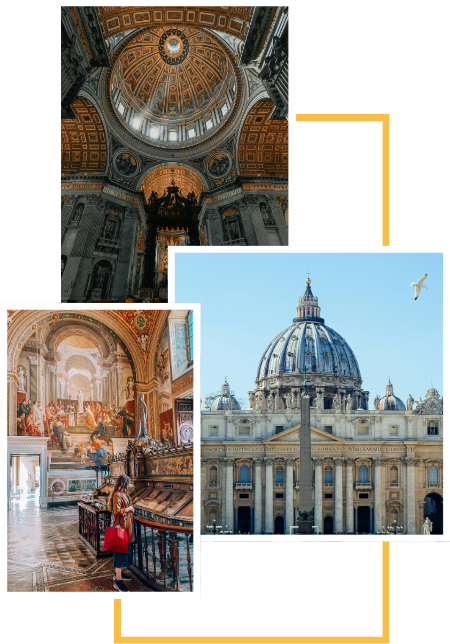

April – Sept 7am – 7pm & Oct – Mar 7am – 6:40pm
Modest dress required; shoulders and knees must be covered
Early mornings or late afternoons, particularly in spring and fall to avoid crowds and the summer heat.
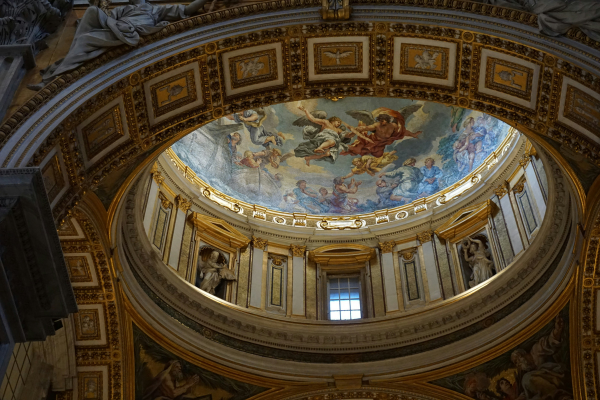
Embark on a journey through the Vatican Museums in Rome, housing an extensive array of Renaissance artworks.
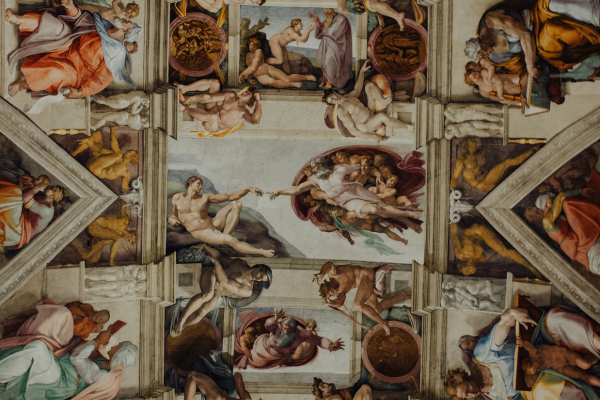
Experience the awe-inspiring Sistine Chapel in Vatican City, renowned for Michelangelo’s magnificent ceiling frescoes.
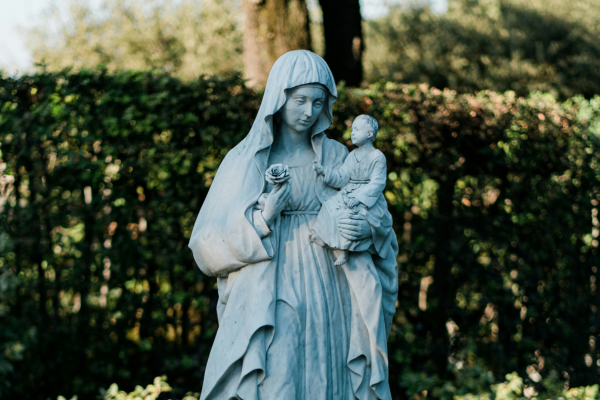
Discover the tranquil Vatican Gardens, a verdant sanctuary nestled within Vatican City, offering serene beauty and historic charm.
Stands over the site believed to be the tomb of St. Peter.
Michelangelo's iconic Pietà is housed within its walls.
Features the largest church dome in the world.

Over 100 tombs of Popes are located inside.
The basilica took over 120 years to complete.
Attracts millions of pilgrims and art enthusiasts each year.





In the heart of St. Peter's Basilica lies a chair bound not just by wood and metal, but by centuries of faith: the Cathedra Petri. Legend holds that this throne was used by St. Peter himself, the first Pope and a direct disciple of Christ. Encased in a glorious bronze sculpture by Bernini, this chair isn't just a relic; it's a tangible link to the dawn of Christianity, symbolizing the unbroken line of apostolic succession that breathes life into the Basilica's very foundations.
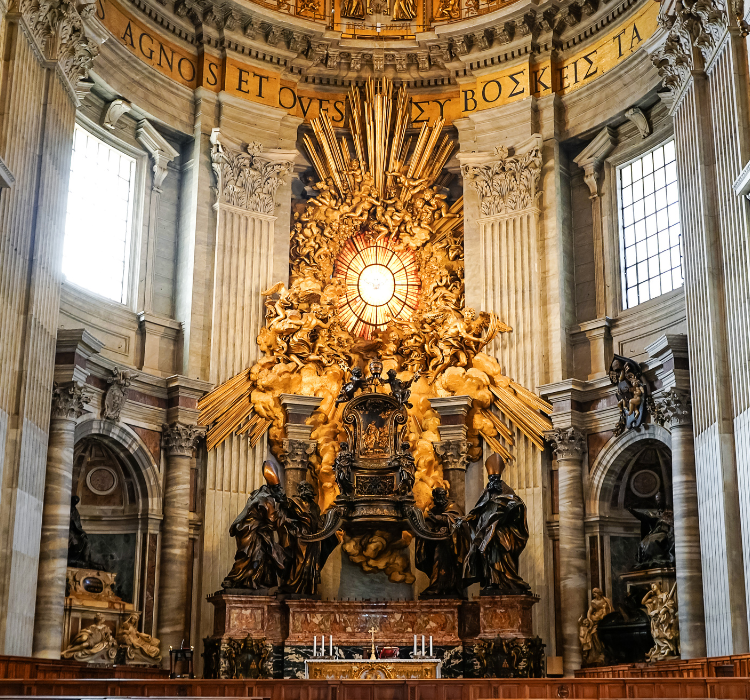
When Michelangelo was commissioned to paint the Sistine Chapel's ceiling, it was against his will; he considered himself a sculptor, not a painter. Yet, this 'reluctant' project became one of the most revered masterpieces in history, transforming the chapel's ceiling into a canvas of divine narrative. Michelangelo's work inside the Vatican's walls, particularly his Pietà housed within the Basilica, stands as a testament to an artist who, despite initial resistance, profoundly shaped the spiritual and artistic landscape of the sanctuary.

Beneath the grandeur of St. Peter's dome lies a whispering gallery, a place where secrets can be shared from one end to the other, despite the vast distance. This architectural marvel not only showcases the ingenuity of Renaissance engineering but also serves as a metaphor for the spread of the Gospel, whispering the words of faith from one corner of the earth to the other.
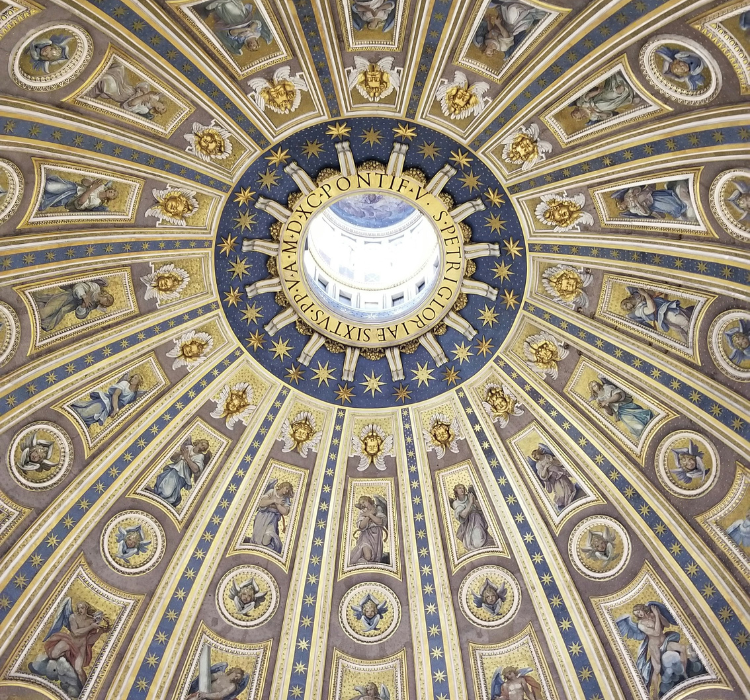
The Vatican Necropolis, lying under St. Peter's Basilica, is a city of the dead, where streets of tombs and mausoleums tell stories of ancient Rome. This sacred ground is believed to house the tomb of St. Peter himself, making the Basilica not just a site of worship but a guardian of history, standing atop layers of faith, tradition, and the eternal quest for the divine.
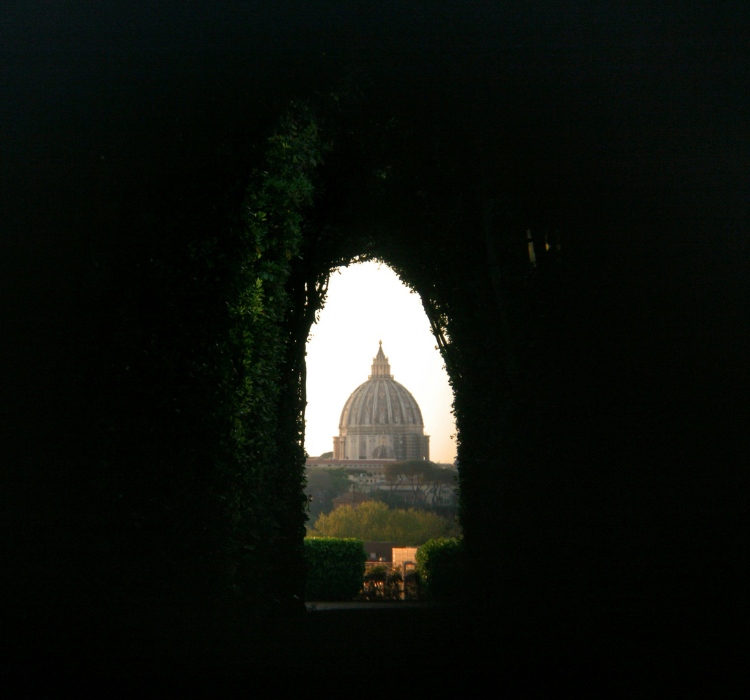
Hovering over the altar of St. Peter's Basilica is Bernini's towering bronze baldachin, its spiraling columns reaching towards heaven. This monumental canopy doesn't just draw the eye upwards; it symbolizes the union of heaven and earth, encapsulating the moment of divine intersection where the earthly and the heavenly meet in a solemn dance of faith.

The Holy Door, sealed but for jubilee years, stands as a beacon of hope and renewal. To pass through this door during a Holy Year is to receive a plenary indulgence, a spiritual tradition deeply rooted in the Church's mercy and forgiveness doctrine. It's not just an entrance; it's a passage to spiritual rejuvenation, reflecting the Church's enduring commitment to guiding the faithful towards redemption and grace.

St. Peter's Basilica, with its towering dome, visible from nearly every corner of Rome, has stood as a pinnacle of pilgrimage for centuries. This architectural behemoth is more than a landmark; it's a journey's end for millions of faithful, each step towards it laden with the weight of personal trials, tribulations, and ultimately, triumphs in faith.
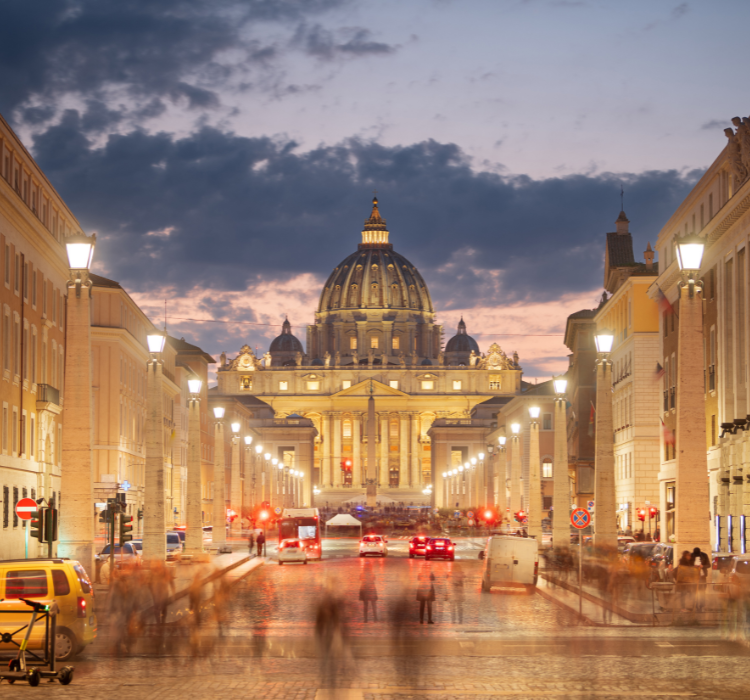
Within the walls of the Vatican, the Swiss Guard not only serves as the Pope's protectors but as living symbols of the Basilica's enduring legacy. Their colorful uniforms and solemn oath represent a bridge between the past and present, guardians not just of a person, but of a timeless sanctum that has witnessed the ebb and flow of history while standing firm in its spiritual mission.

Tradition holds that the original St. Peter’s Basilica was founded by Emperor Constantine in the early 4th century over the tomb of St. Peter, marking one of the first significant Christian worship sites in Rome.

Pope Julius II lays the foundation stone for the new St. Peter’s Basilica, initiating a monumental rebuild that would span over a century, involving some of the most renowned artists and architects of the Renaissance and Baroque periods.
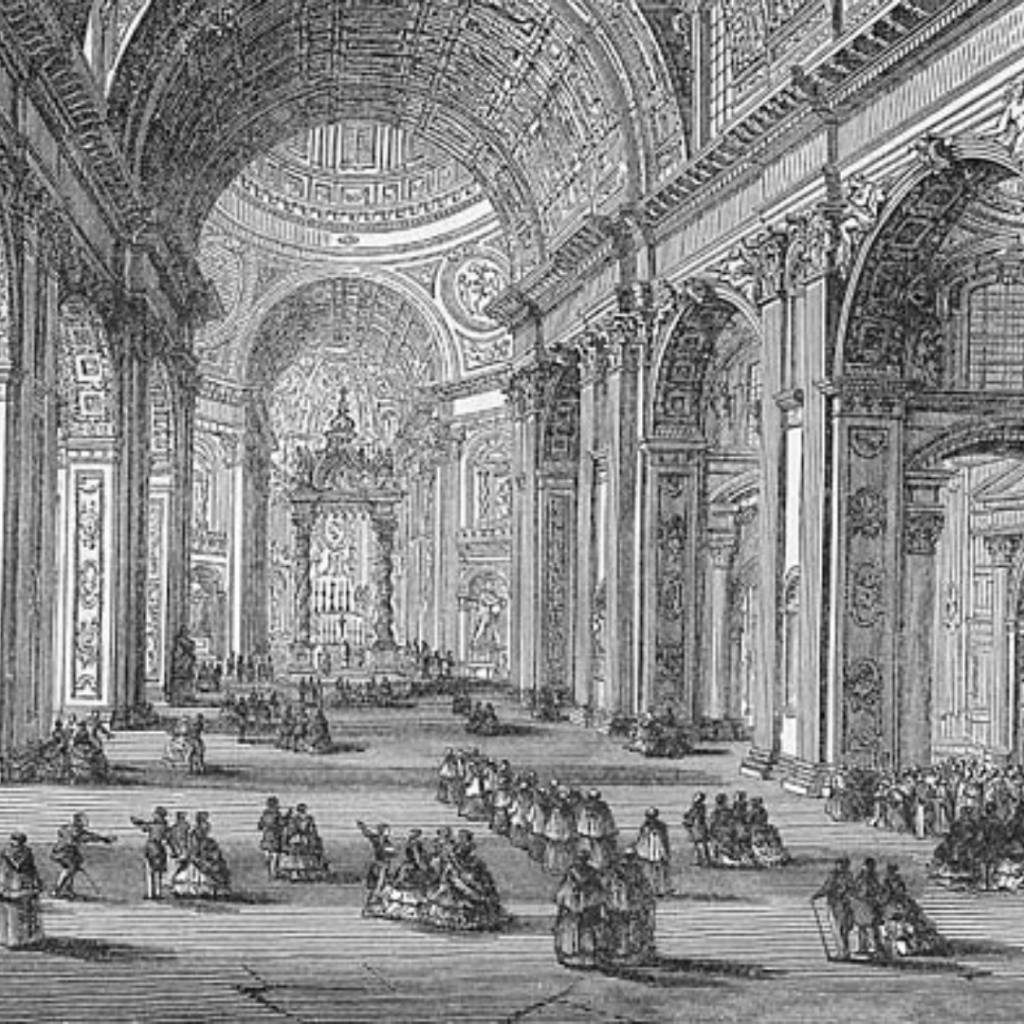
Pope Julius II lays the foundation stone for the new St. Peter’s Basilica, initiating a monumental rebuild that would span over a century, involving some of the most renowned artists and architects of the Renaissance and Baroque periods.

Michelangelo, at 71, takes over as chief architect, later designing the dome that would become the defining feature of the Basilica and an iconic element of the Roman skyline.
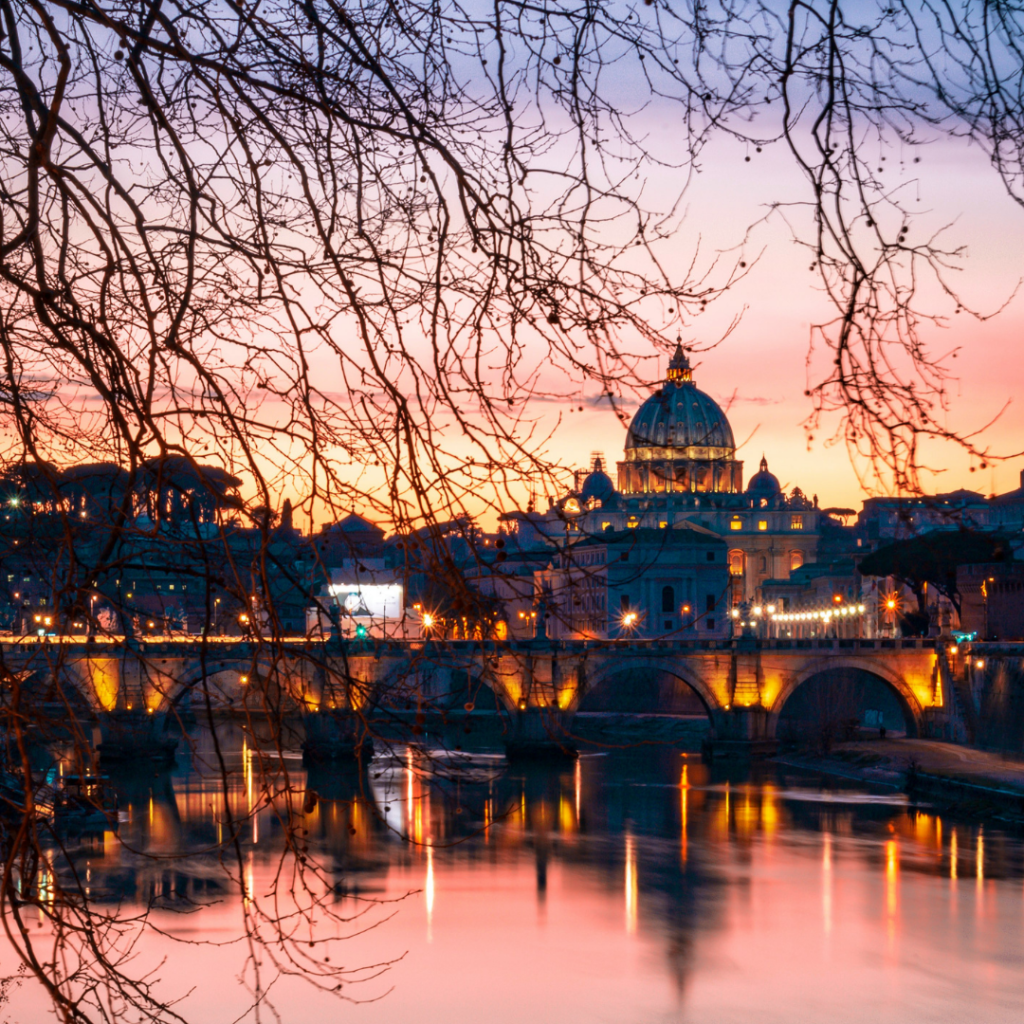
The dome is completed by Giacomo della Porta, who succeeded Michelangelo, marking a pivotal moment in the architectural history of the Basilica.

The dome is completed by Giacomo della Porta, who succeeded Michelangelo, marking a pivotal moment in the architectural history of the Basilica.

Pope Urban VIII consecrates the new St. Peter’s Basilica, exactly 1300 years after the consecration of the original structure, celebrating the culmination of a project that involved over a dozen popes and countless artists.
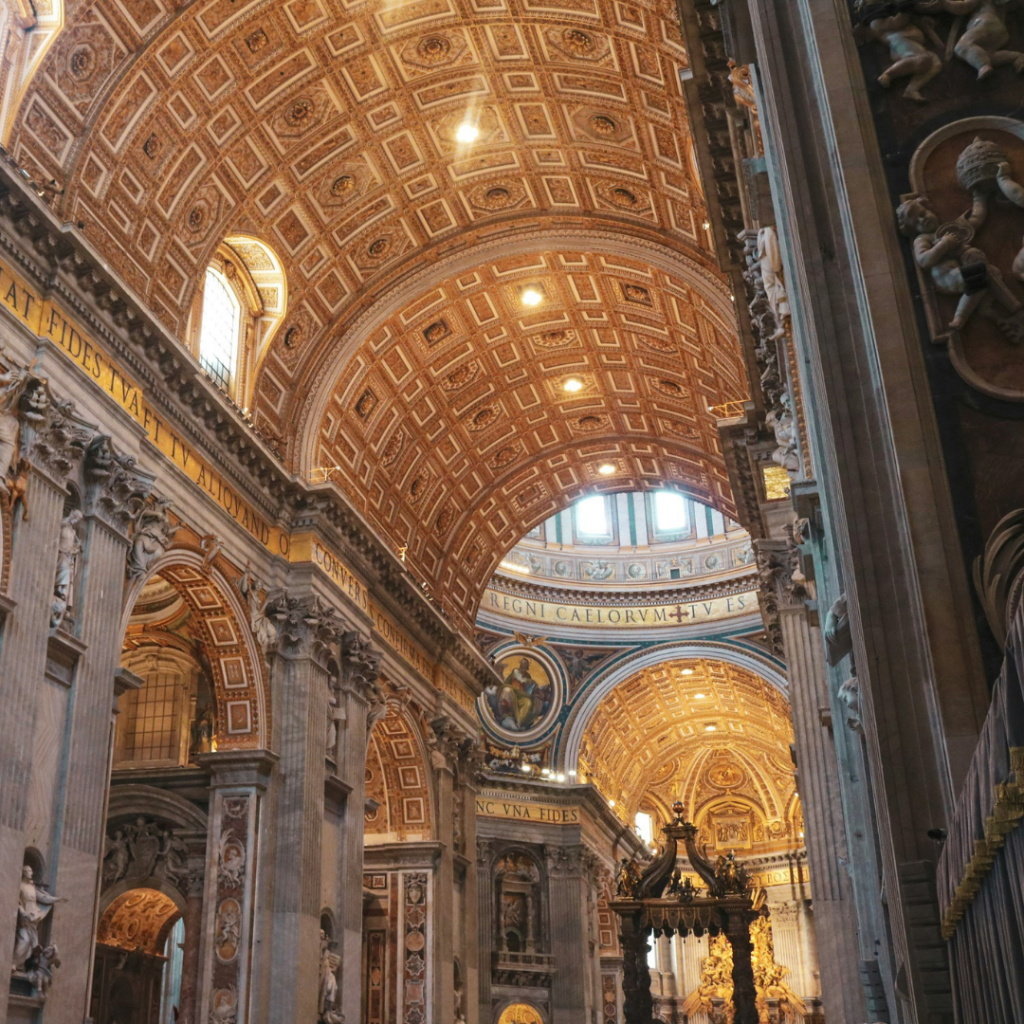
The expansive Bernini-designed St. Peter’s Square (Piazza San Pietro) is completed, including the iconic colonnades that embrace visitors in what Bernini intended to be ‘the maternal arms of Mother Church’.

The expansive Bernini-designed St. Peter’s Square (Piazza San Pietro) is completed, including the iconic colonnades that embrace visitors in what Bernini intended to be ‘the maternal arms of Mother Church’.

The final touches to the interior are completed, including the grandiose Baldachin by Bernini over the papal altar, directly above St. Peter’s tomb.
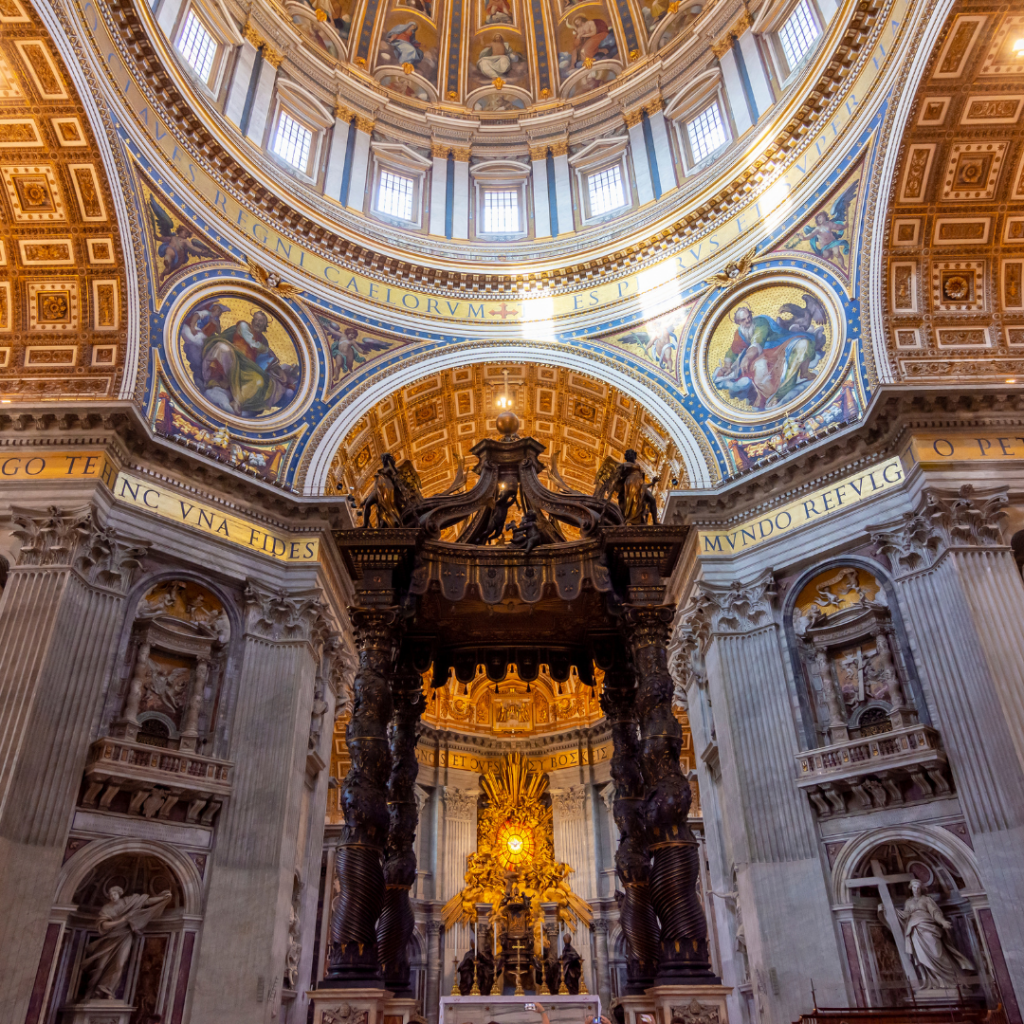
The Vatican grottoes, a series of chapels and tombs beneath the Basilica, are fully excavated and opened to the public, revealing a wealth of history and art.

The Vatican grottoes, a series of chapels and tombs beneath the Basilica, are fully excavated and opened to the public, revealing a wealth of history and art.

The completion of the Vatican II renovations, which modernized the liturgical practices and infrastructure of the Basilica, aligning it with contemporary Catholic worship practices.

St. Peter’s Basilica is included in UNESCO’s list of World Heritage Sites, as part of the Vatican City designation, acknowledging its universal value as a cultural and religious site.
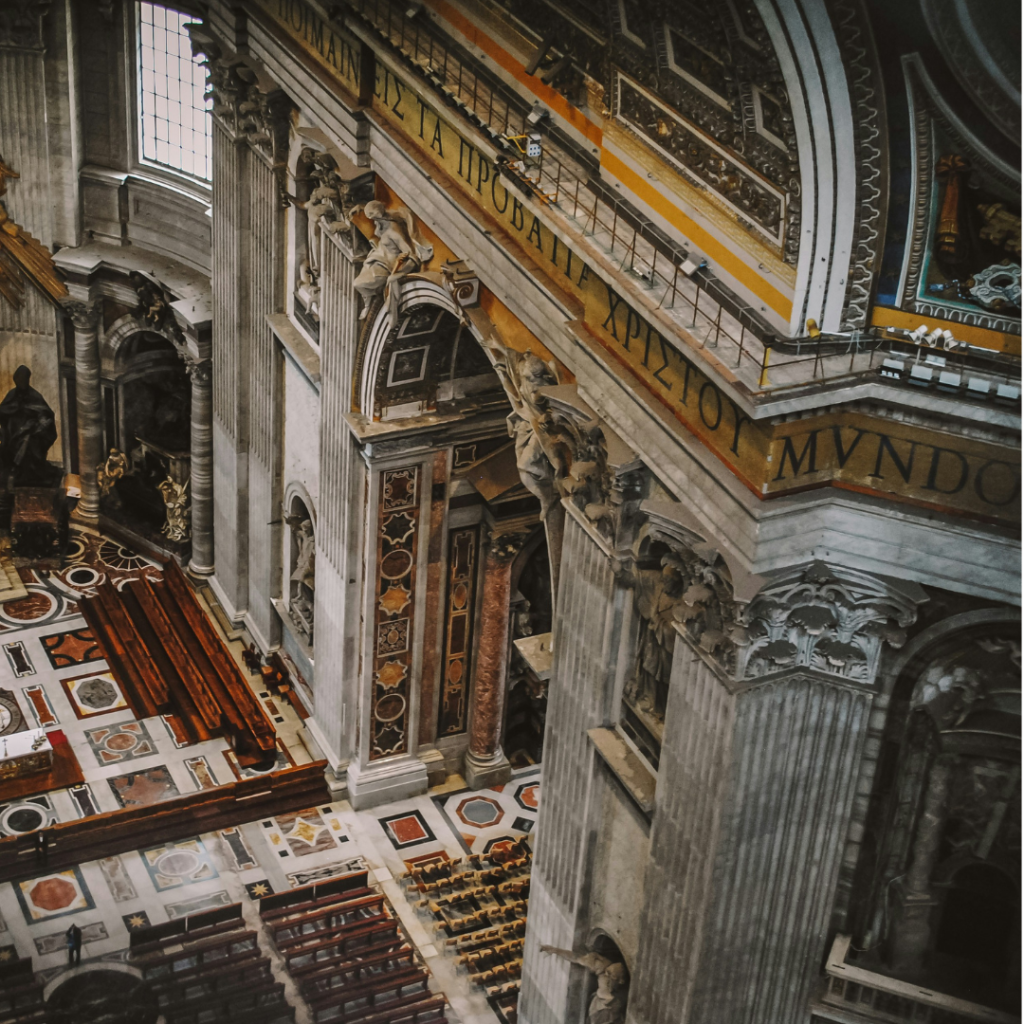
St. Peter’s Basilica is included in UNESCO’s list of World Heritage Sites, as part of the Vatican City designation, acknowledging its universal value as a cultural and religious site.

The Basilica continues to serve as the heart of Catholicism, hosting key religious ceremonies and millions of pilgrims and tourists each year, while ongoing conservation efforts ensure its preservation for future generations.

The election of Pope Francis is announced from the central balcony of St. Peter’s Basilica, marking a new chapter in the Church’s history with the first Pope from the Americas.
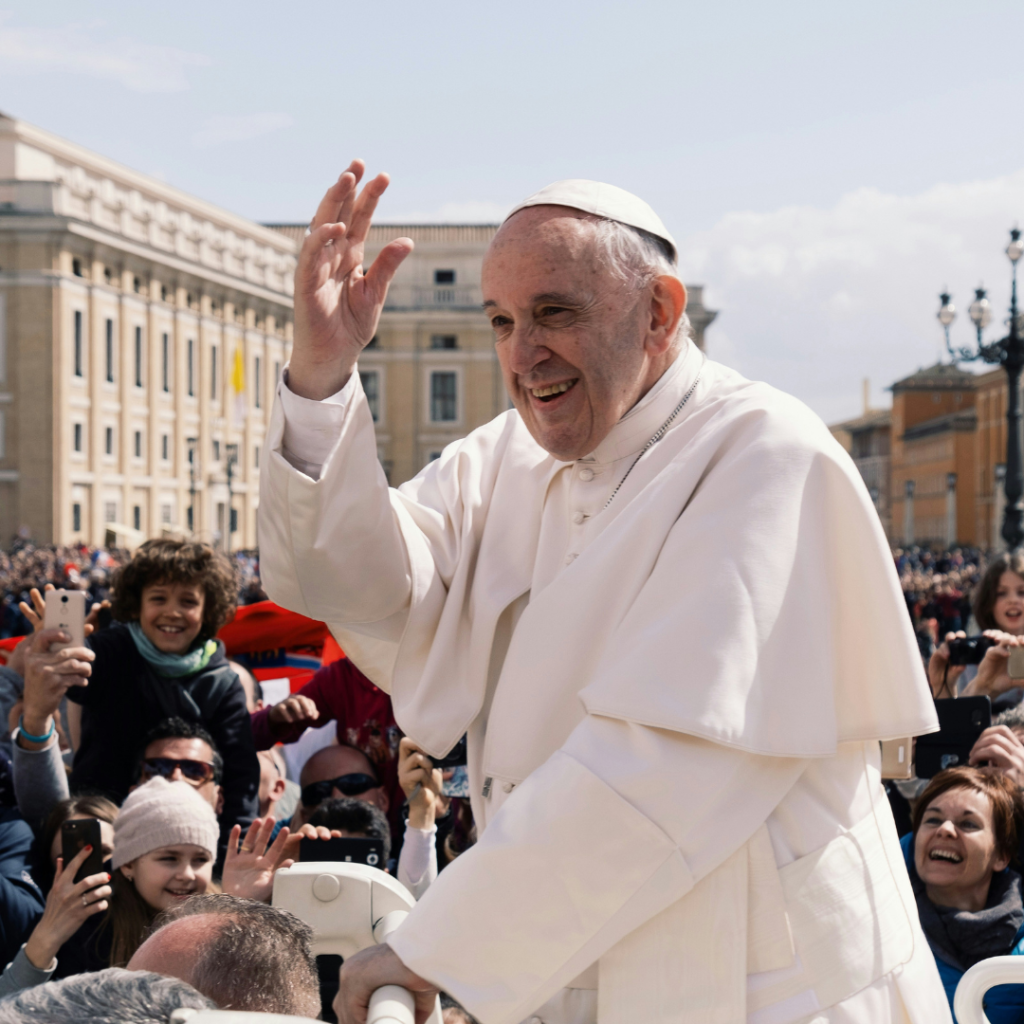
The election of Pope Francis is announced from the central balcony of St. Peter’s Basilica, marking a new chapter in the Church’s history with the first Pope from the Americas.

St. Peter’s Basilica remains a living monument, continuously adapting to the needs of the Church and its faithful, while preserving its rich heritage and spiritual significance.
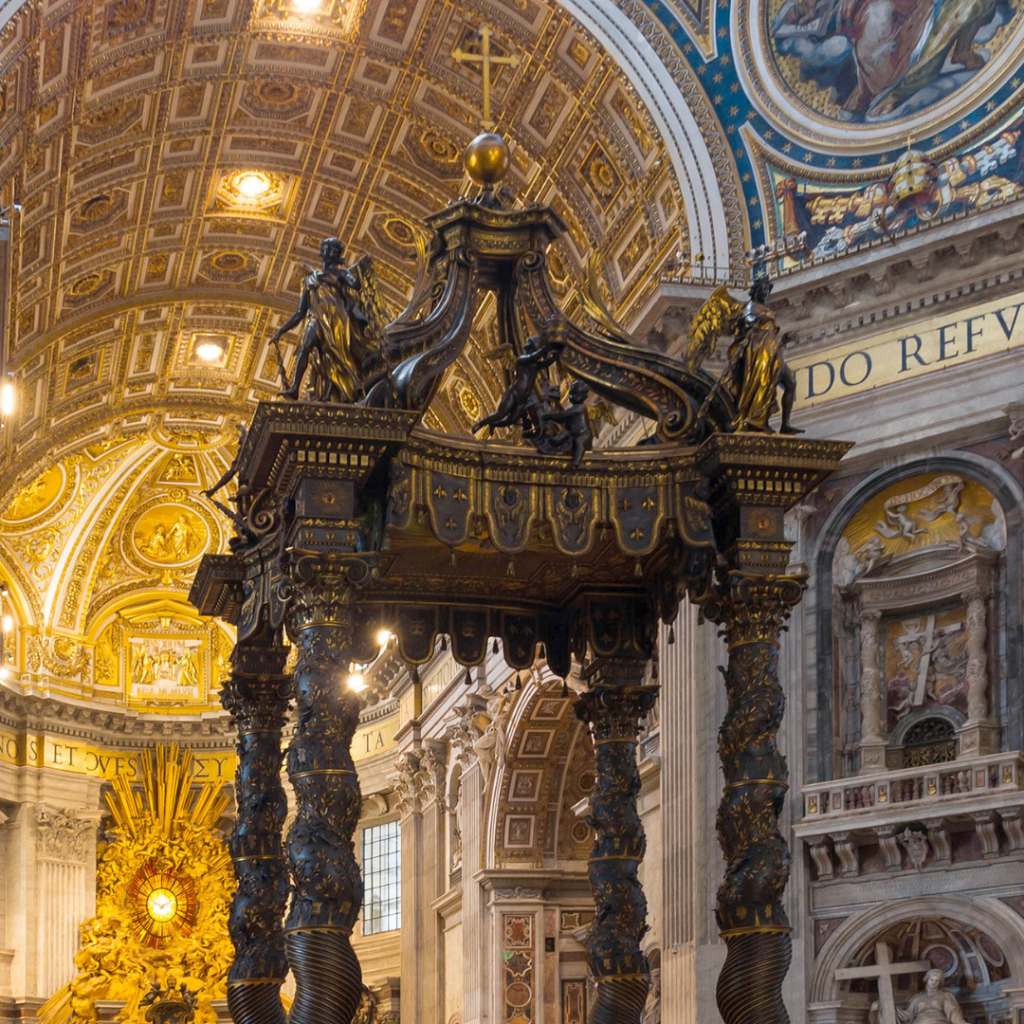

The narrative of St. Peter’s Basilica is anchored in its sacred inception, believed to stand over the tomb of St. Peter, the apostle and first Pope.
This hallowed beginning traces back to the 4th century when Emperor Constantine commissioned the original basilica, intertwining the roots of Christianity with the architectural fabric of the church.
This foundational act not only marked the physical laying of stones but also symbolized the church’s establishment on the bedrock of apostolic tradition.
The site, steeped in martyrdom and sanctity, has drawn pilgrims for centuries, seeking closeness to the cornerstone of their faith.
The basilica’s inception resonates through time, echoing the enduring connection between the faithful and the apostolic lineage, a testament to the church’s foundational beliefs and its role as a custodian of history.
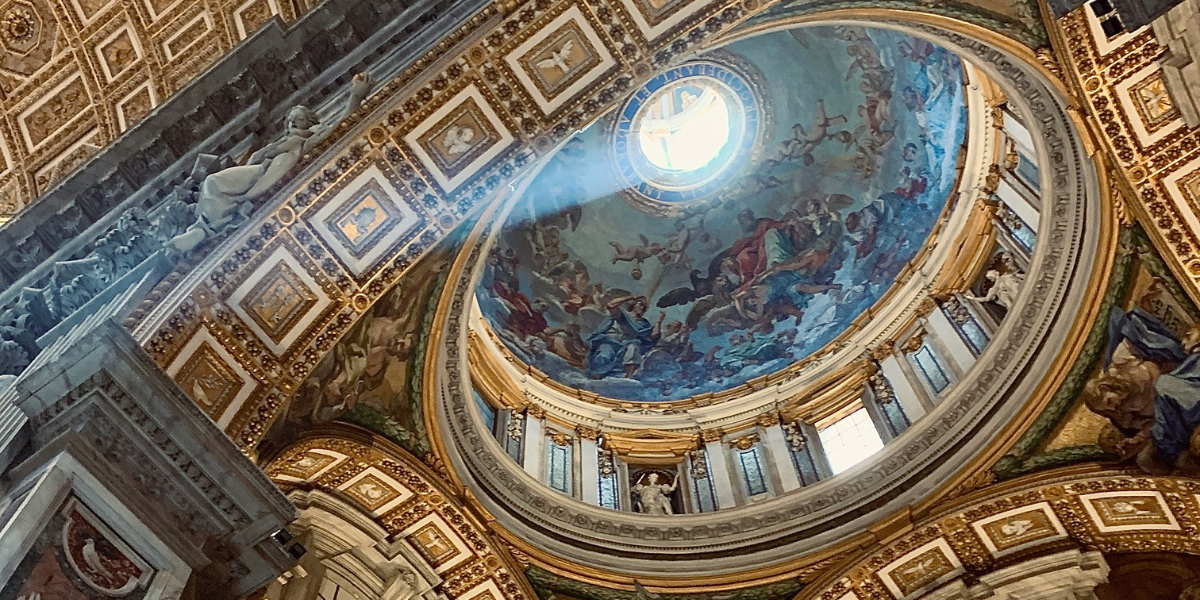
The 16th-century decision to rebuild St. Peter’s Basilica marked the beginning of an era of transformation, transcending its role as a religious sanctuary to become a beacon of Renaissance art and architecture.
Visionary minds like Bramante, Michelangelo, and Bernini contributed their genius, each leaving an indelible mark on the basilica’s evolution.
Michelangelo’s dome, in particular, became an emblem of divine aspiration, its soaring form a symbol of the church’s spiritual ambitions.
This period of rebirth was not just about architectural grandeur but also about the fusion of faith and artistry, creating a space where every column, fresco, and sculpture narrates the church’s sacred saga, making the basilica a living tapestry of theological and cultural heritage.
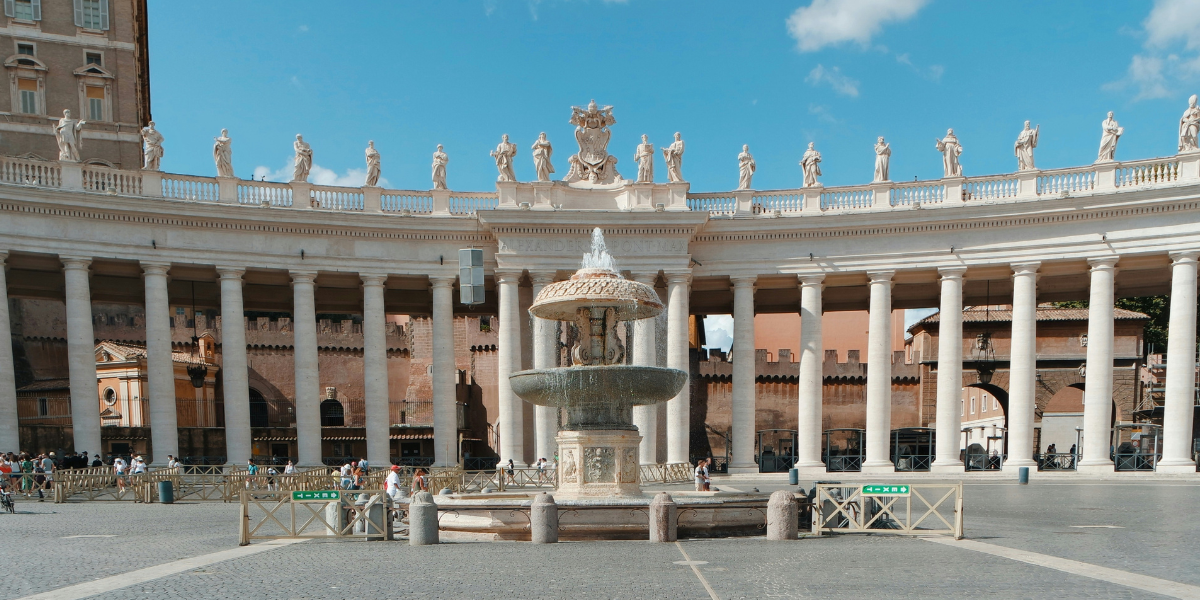
Gian Lorenzo Bernini’s contribution to St. Peter’s Basilica, particularly through the grand colonnades that encircle St. Peter’s Square, embodies a vision of unity and inclusion.
Known as the “maternal arms of the church,” these sweeping arcades welcome believers and visitors alike, symbolizing the church’s embrace.
This architectural marvel is not just a feat of engineering but a profound expression of the church’s universal call, inviting all into a communal space of faith.
The square, with its central obelisk and twin fountains, becomes a stage for the church’s most solemn rituals and joyous celebrations, reflecting the dynamic pulse of Catholicism and its enduring message of hope and community.
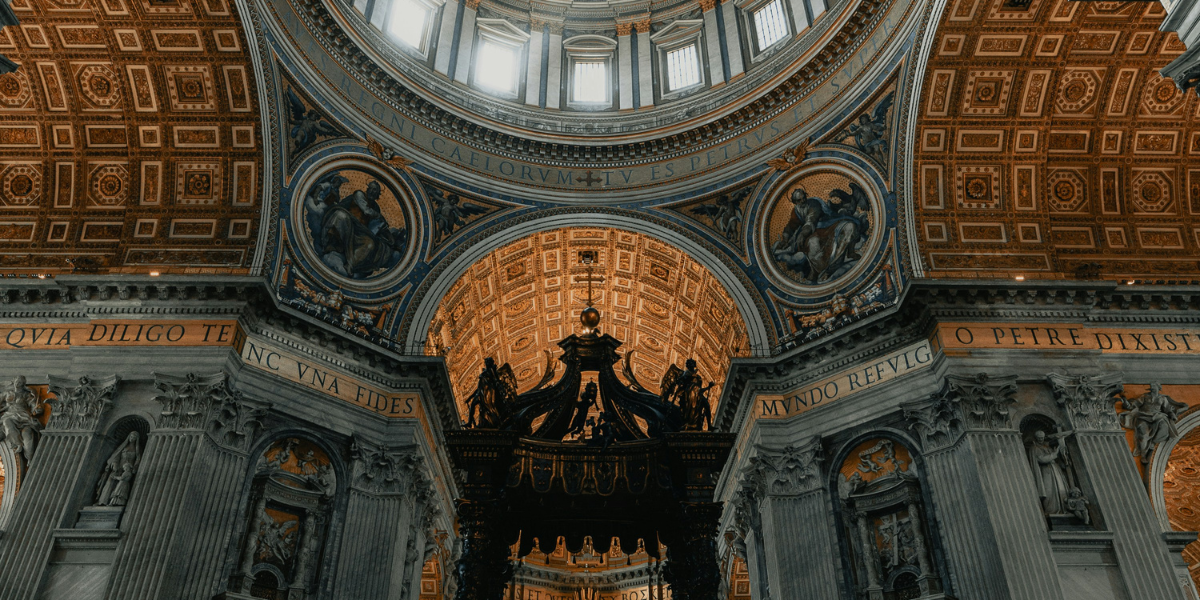
The interior of St. Peter’s Basilica stands as a testament to the interweaving of beauty and belief, housing some of the world’s most renowned artworks that transcend religious and cultural boundaries.
From Michelangelo’s Pietà, a masterpiece of Renaissance sculpture, to the transcendent frescoes and mosaics, the basilica’s art serves as a conduit for spiritual reflection and worship.
Bernini’s Baldachin, with its spiraling bronze columns over the papal altar, anchors the nave in a narrative of divine glory and artistic innovation.
These artistic endeavors are not mere decorations but dialogues between faith and human creativity, each piece a sermon in stone and paint, inviting contemplation and devotion within the basilica’s sacred walls.
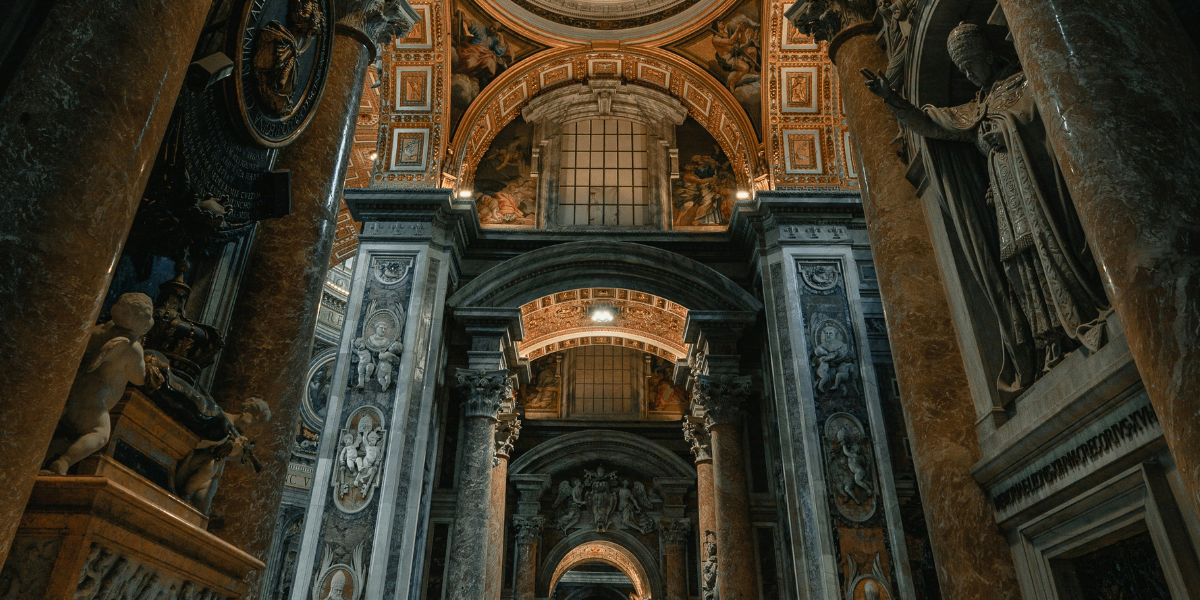
St. Peter’s Basilica is more than an architectural marvel; it is the ceremonial heart of the Catholic Church, where rituals and traditions dating back centuries unfold beneath its majestic dome.
Papal Masses, Easter Vigils, and Christmas celebrations draw the faithful from around the world, uniting them in a tapestry of liturgical heritage.
The basilica’s very structure, with its expansive nave and deep chapels, is designed to accommodate the grandeur of these ceremonies, creating a space where the sacred and the communal converge.
Each ritual, from the solemnity of Holy Week to the joy of the Easter morning, is imbued with a sense of continuity and connection to the apostolic past, making St. Peter’s not just a place of worship but a living vessel of the church’s enduring spiritual journey.
Contact Us
Copyright © 2025 Temples.org. All rights reserved.